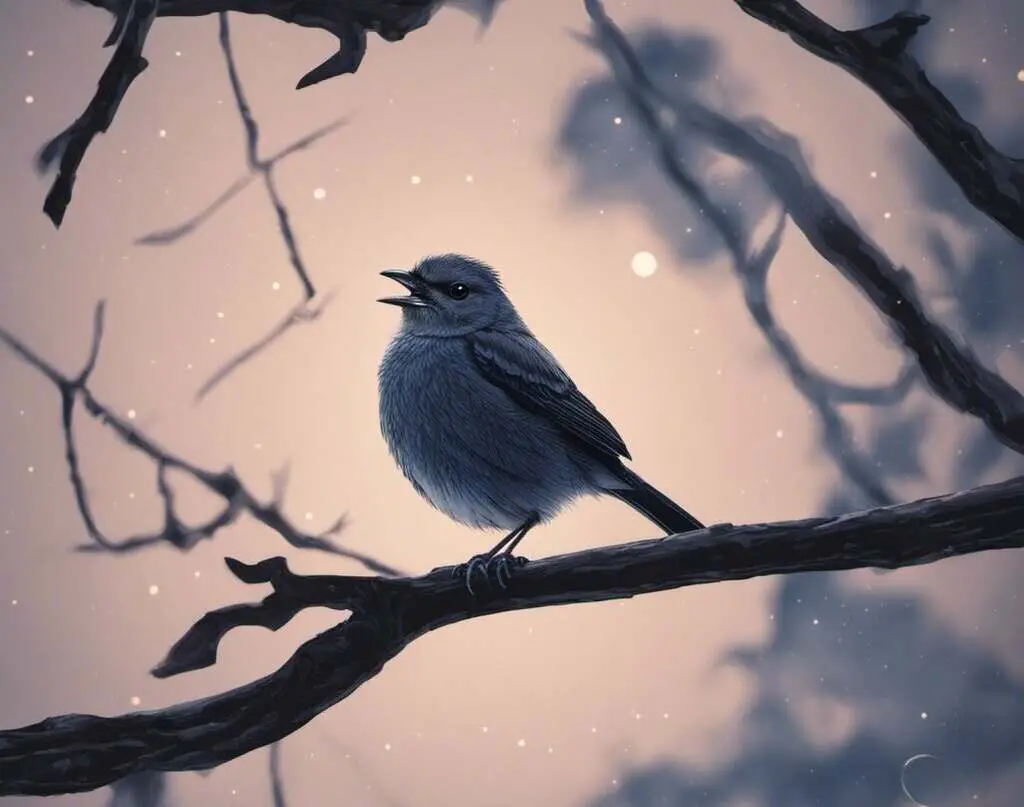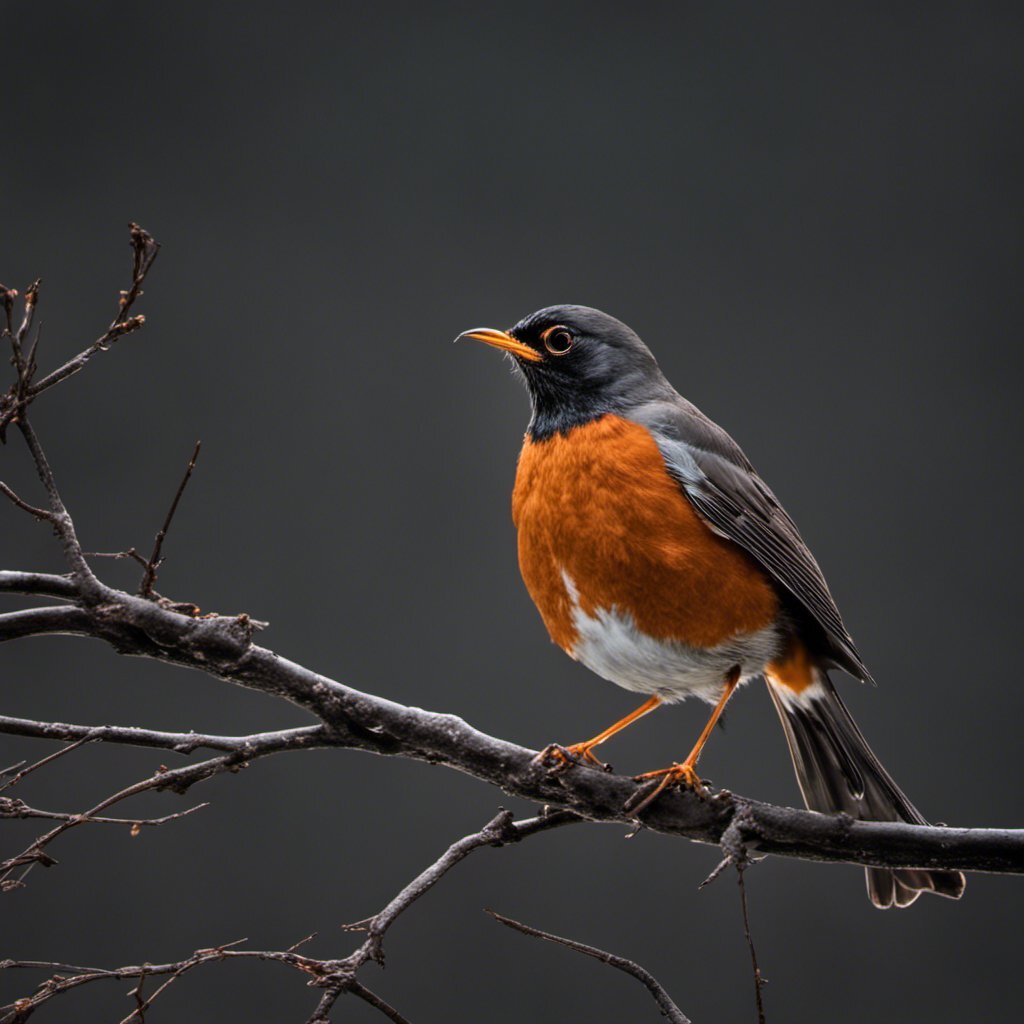There’s something magical about waking up to the sweet sound of birdsong. The melodies of our feathered friends are a reminder of the beauty of nature and a symbol of the coming of a new day. However, have you ever wondered when and why birds stop chirping?
In this article, we will explore the fascinating world of bird vocalization and behavior. We will answer the question, “What Time Do Birds Stop Chirping?” and provide insights into the factors that influence bird silence.
We will also discuss common misconceptions and shed light on the significance of bird communication in their survival and reproductive success.
Table of Contents
- 1 Key Takeaways:
- 2 What Time Do Birds Stop Chirping?
- 3 Bird Vocalization and Behavior
- 4 Understanding Bird Communication
- 5 Daily Patterns of Bird Activity
- 6 Factors Influencing Bird Silence
- 7 Common Misconceptions about Bird Chirping Time
- 8 Nocturnal Bird Species
- 9 Migration and Chirping Patterns
- 10 Human Interaction and Bird Chirping
- 11 Conclusion
- 12 FAQs: What Time Do Birds Stop Chirping?
- 12.1 Why do birds chirp?
- 12.2 What are the different types of bird communication?
- 12.3 What factors influence when birds stop chirping?
- 12.4 Are there any nocturnal bird species?
- 12.5 How does migration affect bird chirping patterns?
- 12.6 What impact does human interaction have on bird chirping?
- 12.7 When Do Birds Hush? What Time Do Birds Stop Chirping Explained.
- 13 Author
Key Takeaways:
- Birds use songs and calls for communication, mating, territorial defense, and social bonding.
- Understanding bird communication is crucial to appreciating the natural world around us.
- The daily patterns of bird activity influence their vocalization, with peak times during the day and lulls in activity.
- Environmental factors, predators, and human disturbance can all impact bird vocalization and behavior.
- Nocturnal bird species have unique vocalization patterns, and migratory birds adjust their chirping depending on their location.
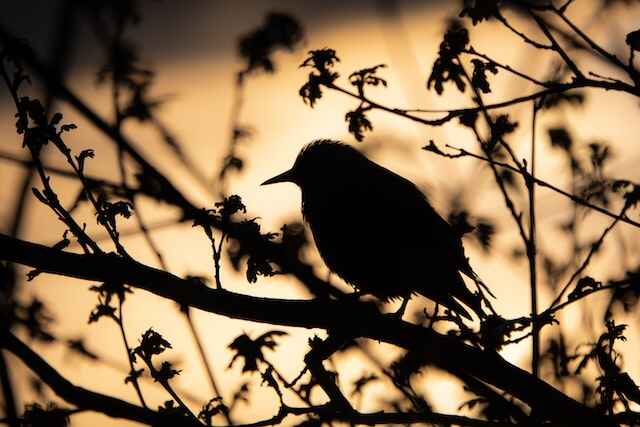
What Time Do Birds Stop Chirping?
Birds typically stop chirping around sunset and start again at dawn. However, this can vary depending on the species of bird, time of year, and location. Some birds, such as owls and nightjars, are active at night and can be heard calling during the night hours. Additionally, some birds may continue to call throughout the night during breeding season.
Bird Vocalization and Behavior
Birds are known for their vocal abilities, demonstrating a wide range of songs and calls that vary between species and individuals. While we may appreciate their singing for its melodic qualities, it plays a crucial role in their behavior and survival.
Bird vocalization is a form of communication used for various purposes, including:
- Communication: Birds use songs and calls to communicate with each other, conveying information about their location, presence, and identity.
- Mating: Male birds use singing to attract females and establish their dominance over other males, while females may use chirps and calls to signal their interest or disinterest in a potential mate.
- Territorial defense: Some birds use songs and calls to defend their territory from other birds, warning them of their presence and dissuading them from entering.
- Social bonding: Bird songs and calls can also serve as a means for social bonding between individuals, enhancing their cooperative efforts and group cohesion.
Overall, bird vocalization is a complex and multifaceted behavior that plays a vital role in their lives. Understanding their songs and calls can provide valuable insights into their behavior and relationships with other birds in their environment.
Understanding Bird Communication
Birds communicate with one another through a variety of vocalizations. Some of the most well-known bird vocalizations are their songs and calls. Bird songs are typically longer and more complex than calls, and are used by birds for many purposes.
One of the primary purposes of bird songs is to attract a mate. Male birds often use their songs to communicate their fitness and genetic quality to potential mates, while females use them to assess potential partners.
Bird songs are also used for territorial defense and social bonding. Male birds will often sing to defend their territory from other males, and birds of the same species will use songs to recognize and bond with one another.
In addition to songs, birds use a variety of calls for different purposes. Alarm calls are used to warn other birds of danger, while contact calls are used to keep in touch with other birds in the flock. Birds also use calls to solicit food from their parents or to alert others of the presence of food.
The complexity and variety of bird vocalizations is truly astounding. Different species of birds have different repertoires of songs and calls, and individuals within a species may also exhibit some variation in their vocalizations. By listening to the sounds of birds, we can gain greater insight into their behavior and communication patterns.
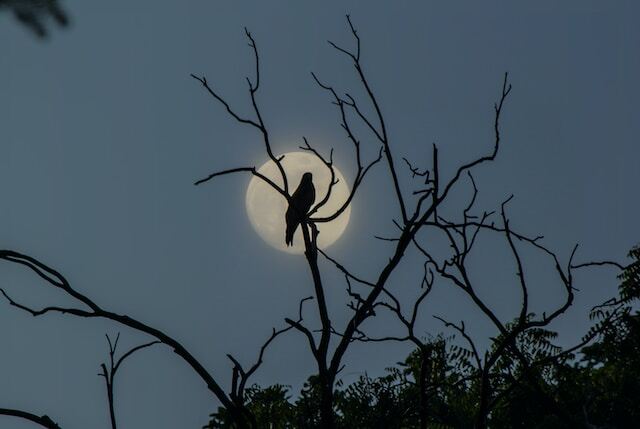
Daily Patterns of Bird Activity
Birds are diurnal creatures, which means that they are most active during the day and rest during the night. However, within their daily schedule, there are certain peak activity times which influence their vocalization patterns.
In general, birds are most vocal during the early morning and late afternoon. This is because these times are associated with the start and end of their daily activity period, and are important for communicating with other birds, establishing territories, and finding mates.
| Time of Day | Activity Level |
|---|---|
| Early Morning (Dawn) | High |
| Late Morning | Medium |
| Afternoon (Midday) | Low |
| Late Afternoon (Dusk) | High |
| Night | Low |
During the midday period, birds tend to rest and conserve energy, which may explain why their vocalization is relatively low during this time. However, there are some exceptions to this pattern, such as birds that live in hot climates where the midday sun is too intense for safe foraging.
It is important to note that the daily activity patterns of birds can vary depending on the species, habitat, and time of year. For instance, migratory birds may adjust their vocalization patterns to suit different environments along their migration route.
Factors Influencing Bird Silence
There are various factors that can influence when birds stop chirping. These factors can range from environmental conditions to the presence of predators and human disturbance.
Environmental Conditions: One of the primary factors that can influence when birds stop chirping is environmental conditions. Weather conditions, time of year, and daily light cycles can all have an impact on bird vocalization. During periods of extreme heat or cold, birds may become less active and vocal. Additionally, changes in daily light cycles during the winter months can cause birds to adjust their activity schedules and vocalization patterns.
Predators: The presence of predators can also play a role in when birds stop chirping. Birds may become quiet and still in the presence of predators to avoid detection. For example, birds may reduce their vocalizations when an owl is nearby to avoid drawing attention to themselves.
Human Disturbance: Human disturbance can also influence bird vocalization. Urbanization, habitat loss, and noise pollution are all factors that can negatively impact bird behavior and communication. Birds may become less vocal or change their activity patterns in response to noise pollution caused by human activities such as construction or traffic.
Understanding the factors that influence when birds stop chirping is crucial for appreciating bird behavior and communication patterns. By being mindful of human impact on the natural world, we can take steps to protect and preserve these important ecological interactions.
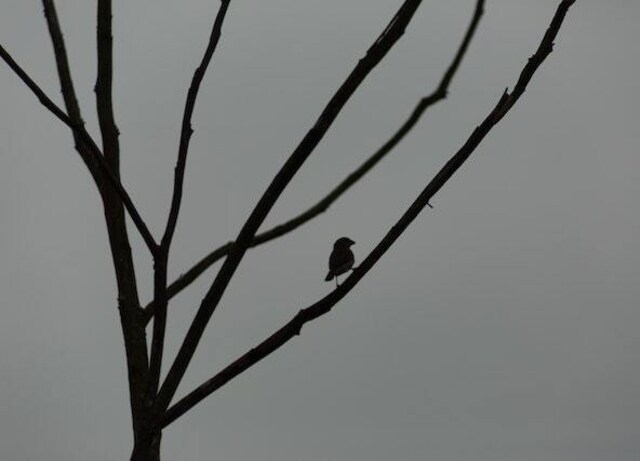
Common Misconceptions about Bird Chirping Time
There are many misconceptions surrounding bird chirping time that have been perpetuated over time. It is important to separate fact from fiction to gain a better understanding of these fascinating creatures.
Birds Only Chirp in the Morning
Contrary to popular belief, birds do not only chirp in the morning. While it is true that many species are most active and vocal during the early morning hours, some birds may continue to chirp throughout the day and even into the evening. The amount of chirping typically depends on the bird’s behavior and the environmental conditions.
All Birds Chirp the Same
While there are some similarities across species, not all birds chirp the same. Each bird has a unique song or call that they use for communication, mating, and territorial defense. Some birds even have a repertoire of different songs and calls that they use depending on the situation.
Birds Stop Chirping at a Specific Time
There is no specific time when birds stop chirping. The amount and timing of bird chirping can vary depending on several factors, including the time of year, weather conditions, and the bird’s behavior. Additionally, different bird species have different activity schedules, so the time when they stop chirping can vary widely.
Birds Only Chirp When They Are Happy
Birds use chirping for a variety of reasons, not only when they are happy. Some birds chirp to establish their territory or to attract a mate. Others may use chirping as an alarm call to alert other birds of danger. The exact reason for chirping can vary depending on the species and the situation.
Nocturnal Bird Species
While most birds are active during the day, there are some species that are nocturnal. These birds have adapted to a different schedule, with their peak activity occurring at night.
Nocturnal birds have unique adaptations that allow them to see in low-light conditions, such as larger eyes and more rod cells in their retinas.
They also have specialized feathers that allow them to fly silently, which is useful for hunting prey without being detected.
Just like diurnal birds, nocturnal species use vocalizations to communicate with one another. However, their calls and songs are often different from those of daytime birds.
Many nocturnal birds have low-pitched hoots or deep, booming calls. Some species, such as the nightjar, have a distinctive churring call that can be heard during the night.
Nocturnal bird behavior is fascinating to observe, but it can be difficult to spot these elusive species. One way to increase your chances of seeing nocturnal birds is to listen for their calls during the night.
You can also look for signs of their presence, such as owl pellets or feathers left behind after a kill.
Examples of Nocturnal Bird Species
| Bird Species | Behavior | Vocalization |
|---|---|---|
| Owls | Hunt prey at night | Hoots, screeches, and whistles |
| Nightjars | Forage for insects | Churring calls |
| Bat species | Feed on insects | Echolocation calls |
Migration and Chirping Patterns
Migratory birds undertake epic journeys spanning thousands of miles, during which they can encounter diverse habitats and environmental conditions. As a result, their vocalization patterns can vary significantly throughout their migration cycle.
During breeding season, male birds use their songs to attract mates and establish territories. As they prepare to migrate, their vocalization patterns shift to focus more on contact calls and navigation signals, which help them communicate with their flock during migration.
The Connection between Vocalization and Migration
Researchers have found that migratory birds adjust their vocalization patterns to account for the changing environments they encounter on their journey.
For example, some species like the Swainson’s Thrush adjust the frequency and pitch of their songs to account for changing temperature and humidity levels as they fly through different levels of the atmosphere.
Other species like the Northern Wheatear alter their songs to better suit the acoustic properties of their wintering or breeding grounds.
Challenges and Risks of Migration
Migration is a perilous journey, and birds face numerous challenges and risks along the way. These include exposure to harsh weather conditions, predation, and exhaustion from undertaking long flights without rest.
As a result, some migratory birds have evolved to display nocturnal migration behavior, where they fly under the cover of darkness to avoid predators and take advantage of favorable winds. These birds tend to produce distinct vocalization patterns, including chattering and trilling calls that are easier to hear in the dark.
Overall, bird vocalization patterns are closely tied to their migration behavior and can provide valuable insights into their ecology and behavior.
Human Interaction and Bird Chirping
Human activities have a significant impact on bird behavior and vocalization. As more and more land is developed for urbanization and human expansion, birds are forced to adapt to changing habitats and contend with the noise and disruption of human activity.
Noise pollution is a particular problem for birds as it can mask important communication signals and disrupt their daily activity schedule. In urban areas, birds may shift their vocalization to higher frequencies to avoid interference from traffic and other sources of human noise. This can result in changes to their communication patterns and potential negative impacts on their mating and territorial behavior.
Furthermore, habitat loss and fragmentation can limit the availability of suitable nesting sites and reduce the overall population density of birds. This can lead to increased competition for resources and potential conflicts between bird species. Human development can also create physical barriers that impede bird movement and migration, disrupting their natural behavior and patterns.
However, there are ways in which humans can mitigate their impact on bird vocalization and behavior. Implementing green infrastructure and creating green spaces in urban areas can provide crucial habitat for birds and reduce the effects of noise pollution. Additionally, being mindful of bird habitats and avoiding activities that may disturb birds can help to minimize human impact on their behavior.
Understanding the relationship between humans and birds is crucial for protecting these important species and preserving the natural environment. By taking steps to minimize our impact and promote sustainable practices, we can help to ensure that birds continue to thrive and contribute to the rich biodiversity of our planet.
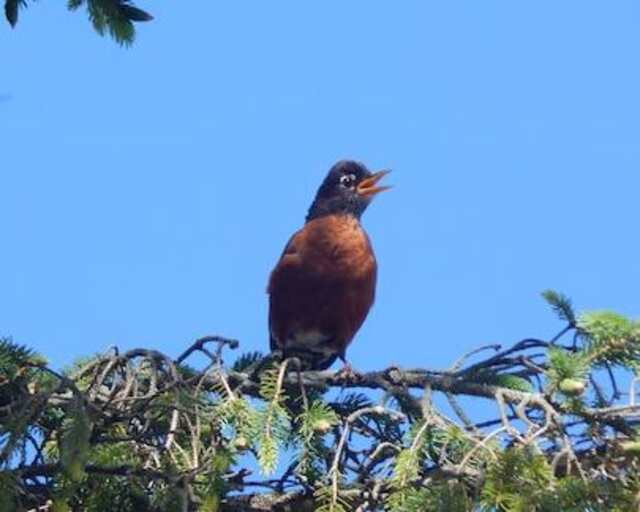
Conclusion
As we’ve explored throughout this article, bird vocalization and behavior are complex and fascinating topics. While the question “What Time Do Birds Stop Chirping?” may seem simple, the answer is influenced by a variety of factors, including daily patterns of bird activity, migration, and human interaction.
By understanding these factors, we can appreciate the rich soundscape of bird communication and the importance of protecting their habitats.
Whether you’re an avid birdwatcher or simply enjoy the sounds of nature, taking the time to observe and appreciate the intricacies of bird behavior can offer a deeper connection to the natural world around us.
So next time you hear a bird song, take a moment to listen and observe, and marvel at the wonder of these feathered creatures.
FAQs: What Time Do Birds Stop Chirping?
Why do birds chirp?
Birds chirp for various reasons, including communication, mating, territorial defense, and social bonding. Vocalization is an essential part of their behavior and allows them to convey messages such as attracting a mate, warning off rival birds, or signaling their presence within their territory. Different bird species have distinct songs and calls that serve different purposes.
What are the different types of bird communication?
Bird communication encompasses various types of vocalization, including songs and calls. Bird songs are melodious and often involve complex melodies and patterns. They are primarily used by male birds to attract mates, establish territory, and communicate with other birds.
Bird calls, on the other hand, are shorter and simpler vocalizations used for a range of purposes, such as alarm calls, contact calls, and socialization.
What factors influence when birds stop chirping?
Several factors influence when birds stop chirping. Environmental factors such as weather conditions, time of year, and daily light cycles play a role. Birds tend to become less vocal during harsh weather or when it is dark. Predators and human disturbance can also affect bird vocalization, as birds may become silent to avoid drawing attention to themselves.
Are there any nocturnal bird species?
Yes, there are nocturnal bird species that are active during the night. These birds have adapted to a different activity schedule and often have specialized vocalizations suited for their nighttime habits.
Owls are a well-known example of nocturnal birds, known for their distinctive hoots. Nightjars and night herons are other species that are active and vocal during the night.
How does migration affect bird chirping patterns?
Migration can affect bird chirping patterns as birds adjust their vocalizations during their journey. Some birds become more vocal during migration as they communicate with other flock members or establish temporary territories along their migration route.
Others may reduce their vocalizations as they focus on long-distance travel. Migration also influences the timing of bird chirping, as birds may arrive at their breeding or wintering grounds at different times.
What impact does human interaction have on bird chirping?
Human interaction can have a significant impact on bird chirping. Urbanization, habitat loss, and noise pollution can disrupt natural bird vocalization patterns. Birds may become less vocal or change their vocalizations in response to these disturbances.
It is important for us to consider the impact of our actions on bird behavior and take steps to minimize habitat destruction and reduce noise pollution to protect bird populations.
When Do Birds Hush? What Time Do Birds Stop Chirping Explained.
Birds hush and stop chirping in the evening as darkness falls. This is a natural behavior for most bird species as they settle down for the night. Understanding bird vocalization patterns and behavior can help us appreciate the beauty of their songs and contribute to their conservation.

